Fyodor Lukyanov: Putin and Trump usher in an era of new diplomacy

Russian President Vladimir Putin speaks on the phone © Sputnik / Sputnik
by Fyodor Lukyanov, editor-in-chief of Russia in Global Affairs, chairman of the Presidium of the Council on Foreign and Defense Policy, and research director of the Valdai International Discussion Club [3-18-2025 published].
(A lot has changed recently with serious negotiations taking place between the US & Russia to restore diplomatic relations and a resolution of the Ukrainian conflict and the wider NATO military expansion concerns. This & the following articles shed light on the dramatic changes and the prospects for a long term resolution of complex geopolitical issues that are reshaping the power structures of the world. It is definitely worthwhile to take the time to study all of these articles to better understand what is happening and the prospects and challenges. There is still hope that we can avoid a global hot WW3 that could escalate into nuclear exchanges that would likely end all life on earth. — RAD)
The US president sees Ukraine as a failing asset, not an ally.
Just two months ago, the idea of serious negotiations between Russia and the United States over Ukraine – let alone a broader normalization of relations – seemed like utopia. Yet today, what once appeared impossible is happening. It proves that, with realism and a genuine will to achieve results, much can be accomplished. However, two extremes must be avoided: one is the illusion that everything will be resolved quickly and painlessly, and the other is the cynical belief that any agreement is fundamentally unattainable.
It is the White House that is driving this political and diplomatic effort. Russia, as it has reiterated many times, is responding to goodwill with a readiness for meaningful dialogue. Meanwhile, Western Europe is playing the role of the perennial spoiler – grumbling and obstructing – but lacking the military and political weight to stop or reverse the process. As for Ukraine, it resists, knowing its survival depends on American support. Despite its reluctance, Kiev is being told behind the scenes by its European backers that following Washington’s lead is inevitable.
Trump the deal-maker, not the ideologue
The key to understanding Washington’s approach came in Donald Trump’s now-infamous conversation with Vladimir Zelensky. When asked whether America was “on Ukraine’s side,” Trump responded that the US was not on anyone’s side – it simply wanted to end the war and achieve peace. This was a revolutionary statement. Until now, no Western politician could answer such a question without reflexively declaring full support for Ukraine’s fight against Russia. But by positioning the US as a mediator rather than a partisan backer, Trump has completely shifted the tone of American engagement.
Trump’s view of mediation is clear: pressure both sides into agreeing to a ceasefire, and then leave them to negotiate their future coexistence – perhaps without further American involvement. In reality, the latter part of the process does not interest Trump much, if at all. His camp sees the war as an unnecessary drain on US resources, a burden America doesn’t need. Their priority is to extricate the US, not to secure ideological victories or long-term commitments.
This explains why Trump is applying much harsher pressure on Ukraine than on Russia. In his eyes, Ukraine is a troubled asset with bad management at the helm – one that is bleeding American money and needs restructuring. From the standpoint of a businessman, the “major shareholder” (Washington) is demanding damage control and cost-cutting from the “management” (Zelensky and his administration). Ukraine’s leaders are being forced to make concessions where possible, but their ability to maneuver is limited.
Russia as a great power, not a dependent state
The pressure on Russia is of a different nature. Unlike Ukraine, Russia is not dependent on the US and remains a major power with its own interests. Trump’s 2017 National Security Strategy defined great power rivalry as the defining feature of modern geopolitics, and this still holds true. Moreover, Trump has long feared nuclear war – something he has spoken about publicly for decades, even before he entered politics. He blames Joe Biden for bringing the world to the brink of nuclear escalation without a clear objective. This concern acts as a moderating force in Trump’s approach to Russia. While he may exert pressure, he will avoid steps that could provoke further escalation.
At the same time, Trump’s remark about being “on no one’s side” applies to Russia as well. He is uninterested in the historical or cultural complexities of the Ukraine conflict. However, credit must be given where it is due: Trump has shown a willingness to abandon the rigid dogmas that have shaped Western policy toward Russia for years. He has taken decisive steps toward understanding Moscow’s position in a way that previous US leaders refused to do.
Trump’s negotiating style is built on pressure and brinkmanship, but ultimately, he believes a deal requires concessions from both sides. This is a businessman’s approach: force the other party to the table, hold a tough line, but ultimately hammer out an agreement that serves mutual interests.
The end of ideological hegemony
What distinguishes Trump from his predecessors is that he is not seeking global hegemony based on ideology. Unlike the liberal interventionists who preceded him, Trump has little interest in abstract ideas. He views American dominance in the world not as a matter of spreading democracy or human rights, but as the ability to secure concrete gains – especially economic ones. His approach, inherited from the business world, is pragmatic: regulatory constraints are obstacles to be bypassed rather than guiding principles. This flexibility, especially in international law and foreign policy, provides room to maneuver and opens paths that previously seemed blocked. In the context of Ukraine, it is an asset – dogmatic thinking has only led to stalemate.
However, Trump sees negotiations as a process of mutual compromise. If he believes Ukraine must make concessions, he also believes Russia must do the same. From his perspective, any deal must be reciprocal; otherwise, it is unfair. This presents both challenges and opportunities for Moscow.
Real diplomacy returns
Above all, the most important development is that real diplomacy has returned. Behind closed doors, intensive negotiations are unfolding – complex, high-stakes discussions with no predetermined outcomes. For years, diplomacy in the Western world had degenerated into a one-sided lecture: the US and its allies dictated terms, and the only question was how quickly the other side would comply. Now, that era is over. The art of real diplomacy – balancing power, recognizing mutual interests, and engaging in direct, substantive talks – is making a comeback.
For the first time in decades, Washington and Moscow are engaging as equals, navigating the complexities of power politics without the ideological baggage of the past. And that, more than anything, is what makes this moment so significant. For the first time in years, there is a real chance of finding a resolution – because finally, there are real negotiations.
Ivan Timofeev: Here’s why Trump is talking peace with Putin
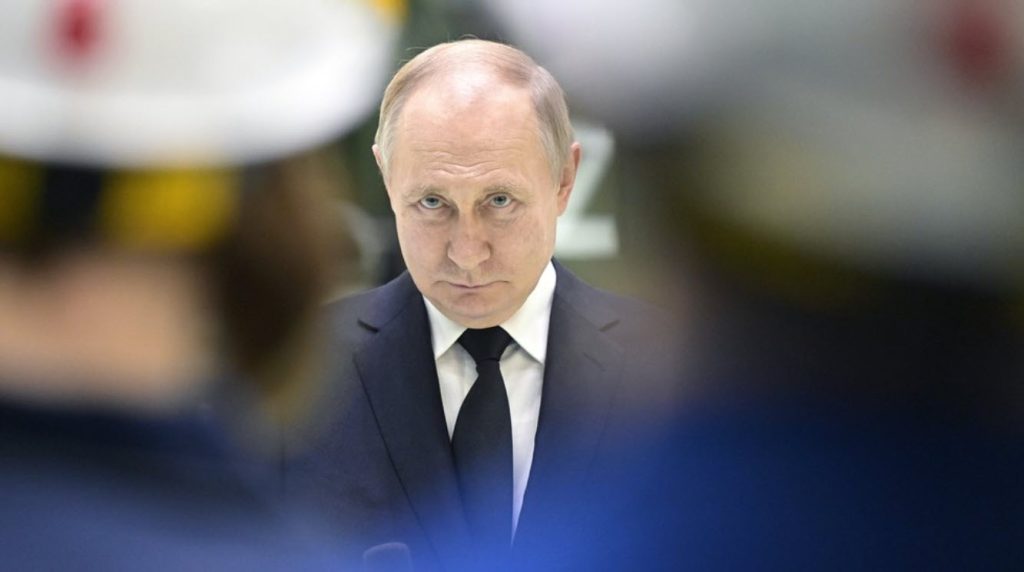
Russian President Vladimir Putin. © Sputnik/Ilya Pitalev
by Ivan Timofeev, programme director of the Valdai Club [3-19-2025 published].
The window for peace in Ukraine is open – but for how long?
Tuesday's talks between Russian President Vladimir Putin and US President Donald Trump have marked a shift towards the resolution of the Ukraine conflict. However, given the number of unresolved issues, the results are still unclear and a setback could occur at any moment.
The flaws in the European security system will continue to jeopardize prospects for normalization for a long time. Nonetheless, the window of opportunity for achieving peace is still open. The motivation to leverage these circumstances is shaped by the results that Russia has achieved in its military operation so far, as well as the potential scenarios that could unfold for both sides if the conflict continues.
Among the key results, we may note Russia’s readiness to use force to defend its interests in Europe. For three decades following the conclusion of the Cold War, Moscow’s ability to protect its interests using force was often dismissed. The military operation in Ukraine put an end to this misconception. It has demonstrated that security relations with the West had become so complicated that, from Russia’s perspective, there appeared to be no other option. It became clear that the use of force and a large-scale conflict in Europe were real possibilities, so Moscow’s demands and concerns couldn’t be brushed aside with vague reassurances. Russia is willing to incur significant losses and take substantial risks in order to defend its fundamental security interests. It is not willing to back away, even if it can save face by doing so.
In the field of diplomacy, it’s notable that the non-Western countries have not formed any major anti-Russia coalitions. The Western bloc, united against Russia, has failed to pull in additional players. China, India, Brazil, South Africa – and others – have distanced themselves from sanctions policies. While businesses in these nations are wary of the secondary sanctions that could be imposed by the US and are not always eager to engage with our country, their governments have avoided imposing anti-Russia measures.
Trade with many nations in the Global South has surged. These countries have neither adopted a pro-Russian stance, nor formed a unified anti-Western front. However, discussions about diversifying global finance, trade, and political institutions have gained considerable traction. Ultimately, the resilience of the Western coalition has begun to falter. The new US administration seems to have recognized that the conflict has reached a dead end and has taken preemptive steps to end it.
Among the diplomatic outcomes, we may note Moscow’s ability to contain the escalation of military support for Ukraine. For an extended period of time, Russia’s ‘red lines’ were often crossed, as it struggled to halt increasing weapons supplies to Ukraine. These deliveries increased, with weapons systems becoming more long-range and lethal. Changes in Russia’s nuclear doctrine and the deployment of a new medium-range missile with a non-nuclear configuration have provided a crucial deterrent signal against the potential mass use of Western cruise missiles and other weapons systems by Ukraine.
Another significant outcome has been the ability to engage in a large-scale conflict with an opponent that has received substantial Western support in the form of weapons, intelligence, and funding. Russia’s defense industry has managed to maintain a high pace and scale of operations, quickly adapting to the new challenges posed by advancements in military technology, including the production and use of drones. At the same time, Moscow has essentially maintained an expeditionary approach in its military actions, avoiding extensive mobilization and instead relying on military volunteers and contract soldiers. The ability to conduct a large-scale and sustained military operation with a professional, rather than conscripted army has been a key interim achievement.
The resilience of the Russian economy amid its confrontation with the collective West is also notable. Its deep integration into global networks, its reliance on Western supply chains, financial institutions, and regulatory frameworks had created significant risks in light of potential large-scale Western sanctions. Such sanctions were imposed immediately after the start of the conflict and have intensified since. Nearly all kinds of restrictions have been employed against Russia, including blocking financial measures, export controls, import bans, and more. Friendly countries that partner with Russia face risks of secondary sanctions. Nevertheless, remarkably, Russia has avoided any significant financial or economic crisis. Clearly, the economy has suffered losses and damage, and this was felt by ordinary citizens. But Russia was able to restructure trade networks, markets, and import sources very quickly by historical standards.
In addition to the economy, the political system has also shown remarkable resilience. Moscow’s opponents had counted on a swift regime change and a split among the elites, but none of this happened. Neither ideological adversaries nor radical supporters were able to destabilize the country’s political system. While stricter order has been imposed amid wartime conditions, the country has managed to avoid sliding into a totalitarian model characterized by excessive and demoralizing control. Society has demonstrated resilience in extreme conditions, and has quickly adapted following an initial period of confusion. The high human cost of military actions, economic challenges, including inflation, and other changes has not led to major disintegration processes. Public sentiment regarding the conflict remains mixed, but it hasn’t divided society in a critical way.
In military terms, some of the direct results of Russia’s military operation include the depletion of Ukraine’s military potential (despite substantial Western support), the containment of possible counter attacks, and control over several strategically important locations. It seems that Moscow is considering the possibility of continuing hostilities, and has the necessary resources for it.
On the other hand, there may be no substantial military and political gains to be had by prolonging the conflict. Continued fighting would only make sense if Russia’s key demands – initially laid out during the negotiations in Istanbul back in 2022 – remain unmet. However, the new US administration also recognizes that dragging out the conflict poses significant risks. Beyond the possibility of a continued Russian offensive, there are concerns about further depleting military stockpiles and incurring enormous financial costs without clear prospects for defeating Russia. Ultimately, the current results and limitations create incentives for both Washington and Moscow to consider a peaceful resolution. Notably, both sides still possess the resources to continue the conflict. The players at the negotiating table each hold strong positions; neither side is negotiating from a weak position. Each side understands their interests and is willing to discuss them. It’s been a very long time since Russia and the US engaged in negotiations with such a mindset.
The Putin-Trump call was a resounding success – whatever was said
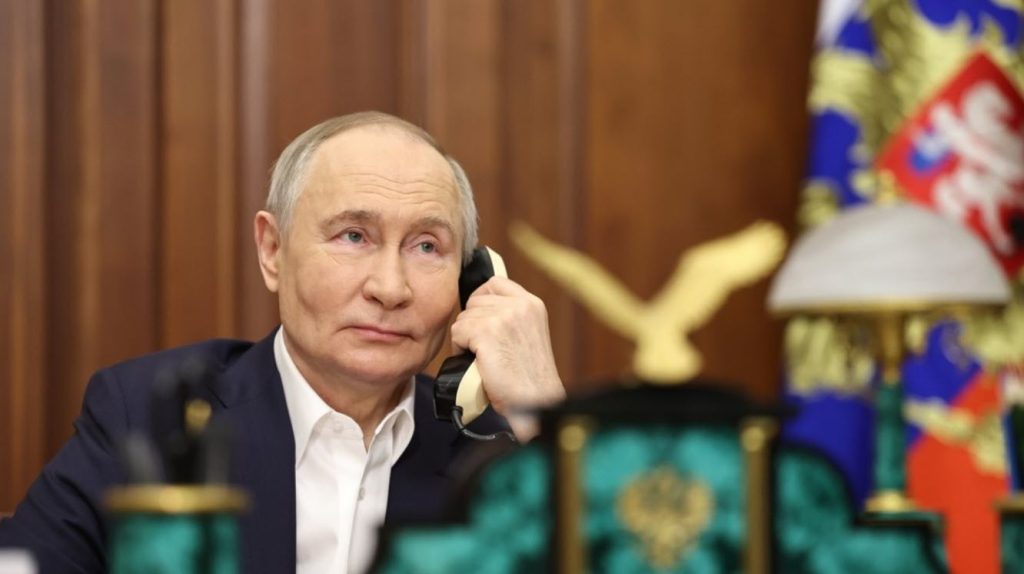
© Sputnik / Aleksandr Kazakov
by Tarik Cyril Amar, a historian from Germany working at Koc University, Istanbul, on Russia, Ukraine, and Eastern Europe, the history of World War II, the cultural Cold War, and the politics of memory [3-18-2025].
Imagine the Russian and American leaders having a productive 2.5-hour-long conversation just two months ago.
The presidents of Russia and the US, Vladimir Putin and Donald Trump, have had a long telephone call. Yet the sky has not fallen and the Earth is not shaking. In other words, at least as far as we know now, those expecting instant sensations must have been disappointed.
No, Odessa has not been handed over to Russia; no, Moscow has not suddenly agreed to abandon its main war aims, such as making and keeping Ukraine neutral again; and no, the call did not produce a finished map of territorial adjustments. But then, to be frank, those expecting such sensations only have themselves to blame.
For they have missed the bigger picture: As so often, the sensation is hidden in plain sight. It is that these talks have taken place and have clearly not failed but succeeded. Clocking in at almost two-and-a-half hours – the longest telephone conversation between leaders in recent Russian-American history, as Russian commentators immediately stressed – the talk was wide-ranging. And it will be remembered as another milestone in the developing new détente between Moscow and Washington.
For those whose baselines have shifted due to rapid recent developments, please recall: Less than half a year ago, before Donald Trump’s re-election to the American presidency, what has just happened would have been considered impossible. Less than two months ago, before Trump’s second inauguration, many observers would still have qualified it as very unlikely. And even between that inauguration and now – notwithstanding the first phone call between Trump and Putin in February – many skeptics were still, understandably, cautious or even pessimistic: The inertia of American deep-state interest and Russophobia, they felt, would never allow this kind of radical rapprochement.
Now, however, it is time to recognize that this, as the Americans say, is happening. The discussion has to move on from “could this possibly be real” to “it’s real and what are the consequences?”
We know far too little at this point to come to robust conclusions. But two important points are clear enough already: The US and Russia will keep these negotiations between themselves, at least in substance: Russian evening news has reported that Moscow has agreed to continue and extend the bilateral process. “Bilateral” is, of course, the word that matters: As predicted by some, the times of “nothing about Ukraine without Ukraine” – always a hypocritical and silly slogan – are over, forever. And NATO-EU Europe remains locked out, too. That’s good news.
The second take-away point we can already register is that Moscow is not making substantial concessions. It is true that, in what was clearly a gesture of good will, Putin did agree to mutually – with Ukraine – suspend attacks on energy infrastructure for 30 days. He also welcomed working out the details of an agreement regarding Black Sea maritime traffic. A prisoner exchange and the unilateral transfer of several dozen severely injured Ukrainian POWs currently being treated in Russian hospitals pointed in the same direction.
But that was it regarding Mr. Nice: Confirming Russia’s readiness to take part in working out “complex” and “long-term” solutions, Putin, of course, made it clear – once more – that Moscow is not interested in anything less, especially not in any form of truce that would serve only as a stalling device for Ukraine and its remaining Western backers.
Likewise, the Russian president re-iterated that the root causes of the conflict will have to be addressed. These include, as should be well-known by now, NATO’s attempt to acquire Ukraine as well as the generally aggressive eastward expansion of the alliance since the end of the Cold War. But those in the West who have a habit of not listening when Moscow speaks, should recall that, from its perspective, the nature of Ukraine’s regime, its treatment of minorities (including religious suppression), and the militarization of Ukraine also belong to these root causes.
Hence, there will only be disappointment for those in NATO-EU Europe who now want to believe that Ukraine may lose territory but can then be turned into what Commission boss Ursula von der Leyen unflatteringly calls a “steel porcupine” (or “stählernes Stachelschwein” in her native German). That will not fly. Russia has fought this war to eliminate a military threat on its western border. If the EU-NATO Europeans should really go ahead with an attempt to replace US support for Ukraine, the war will continue. But without the US and, probably, even against the backdrop of a flourishing Russian-American détente. Good luck with that one.
Unsurprisingly, further remarks by Putin in the conversation with Trump, as reported by Russian evening news, confirm these hard limits to Moscow’s “give.” The Russian president explained that a general 30-day ceasefire, as suggested by Washington, is conditional on several “essential” points: effective supervision along the whole frontline and a stop to re-arming the Ukrainian military, including, obviously, from outside the country, as well as to forced mobilization inside Ukraine.
Indeed, “emphasis was put” on the fact that a “key” condition for both avoiding further escalation – note that Russia emphatically does not exclude that option – and for finding a diplomatic solution, is a “complete” end of foreign supplies of military hardware and intelligence for Kiev.
Kiev’s unreliability in negotiations was mentioned and so were war crimes committed by its forces. Even another conciliatory message had its flip side: Russia, Putin explained, is prepared to apply “humanitarian” considerations regarding Ukrainian troops now encircled in its Kursk region. When, that is, they surrender into captivity. That is basic international standard, of course, and only to be expected. But those asking, in effect, for the special privilege of just letting these units escape to fight another day, have been told once again that there won’t be any freebies anymore. Kiev has by now admitted that it mis-used the Istanbul negotiations of spring 2022 in bad faith to gain military advantages. Moscow is clearly determined to not let anything comparable happen again.
Ultimately, this conversation belongs in two main contexts, both historic: the ending of the Ukraine War, which may or may not work out. What Russia has made clear is that it will end only on its terms, which is what powers which win wars usually do. And the US has de facto accepted this outcome. Because – historic context number two – the new American leadership is putting a general policy of normalization and, in effect, détente and cooperation with Russia above the West’s proxy war in Ukraine. And so it should.
The statements, views and opinions expressed in this column are solely those of the author and do not necessarily represent those of RT.
Putin, Trump trust each other – Kremlin
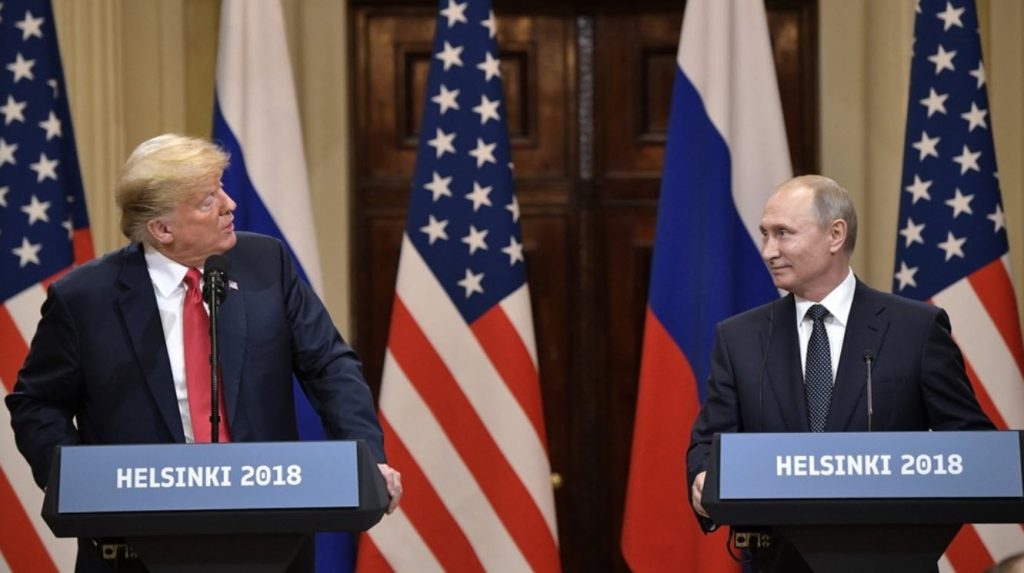
US President Donald Trump and Russian President Vladimir Putin. © Sputnik/Alexey Nikolskiy
by RT [3-19-2025 published].
Following the presidents’ phone call on Tuesday, spokesman Dmitry Peskov said that further contacts will be arranged in short order.
Russian President Vladimir Putin and his US counterpart, Donald Trump, trust each other, Kremlin spokesman Dmitry Peskov has said regarding the two leaders’ phone conversation on Tuesday.
During the call, which lasted more than two hours, the two heads of state discussed the resolution of the Ukraine conflict, with Putin responding positively to a 30-day ceasefire proposed earlier by Trump and agreeing to halt attacks on the country’s energy infrastructure as an initial step in that direction. On top of that, the Russian and US presidents reportedly discussed the situation in the Middle East.
Speaking to Russian media on Wednesday, Peskov stated, “I can say with a high degree of confidence that Presidents Putin and Trump understand each other well, trust each other, and intend to proceed step-by-step along the path of normalizing Russian-US relations.”
According to the Kremlin spokesman, “both today and tomorrow, there will be additional arrangements of concrete dates for next contacts as well as the makeup [of the delegations].” He promised to reveal more details once Moscow and Washington have agreed on these specifics.
Peskov told reporters that given the legacy left behind by the previous administration in Washington, getting relations back on track is a labor-intensive task. However, the two presidents’ “strong will” provides grounds for optimism, the official stated.
According to Peskov, the two presidents discussed Western weapons deliveries to Ukraine, which will “top the agenda of any contacts” on resolving the conflict. However, given its sensitivity, the issue will not be discussed publicly for the time being, the official stressed.
President Putin also conveyed some other “nuances in the context of a potential ceasefire” to his US colleague, the Kremlin spokesman revealed.
Peskov concluded that Moscow is “closely watching whether the Kiev regime will heed the strong determination of the Russian and US presidents to do everything possible” to settle the conflict peacefully.
According to the Kremlin’s readout of the March 18 call, Putin “immediately” ordered Russian troops to halt attacks on Ukraine’s energy sites following the conversation, and also responded “favorably” to the maritime truce proposal, with specific details to be worked out in further talks.
Commenting on the talks in a post on his Truth Social platform, Trump wrote that the peace process “is now in full force and effect.”
Ukrainian leader Vladimir Zelensky stated on Tuesday that he supports a maritime ceasefire and a moratorium on strikes against energy facilities, pending further details from the US.
‘Diplomacy returns’: Russian experts on the Putin-Trump call
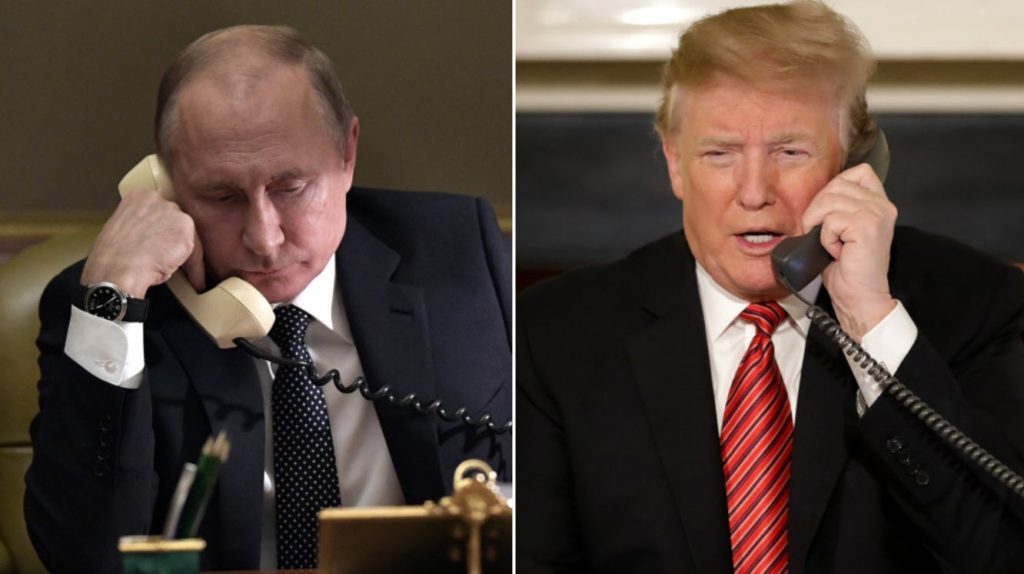
(L) Russian President Vladimir Putin; (R) U.S. President Donald Trump. © Sputnik/Alexey Nikolskiy; Chip Somodevilla/Getty Images
by RT [3-19-2025 published].
Diplomats and analysts have reacted following the longest-ever telephone conversation between the presidents of Russia and the US.
Tueday’s phone conversation between Vladimir Putin and Donald Trump – their second publicly known discussion this year – has again drawn considerable attention. Lasting nearly two and a half hours, it became the longest call ever held between sitting presidents of the US and Russia.
Their dialogue primarily focused on bilateral relations and addressing the ongoing conflict in Ukraine. Key preliminary outcomes from the call include a mutual agreement to halt strikes on energy infrastructure for 30 days, establish a ceasefire in the Black Sea, exchange prisoners, and form expert groups from both Russia and the US to continue working toward peace.
Both the Kremlin and the White House praised the conversation as “very good” and highly positive. Here we explore if promment experts in Russia share the same view on these latest developments.
Konstantin Kosachev, vice speaker of the Federation Council:
The most significant takeaway from the recent call was that it truly felt like a dialogue, not two separate monologues. Importantly, it wasn’t conducted via typical, ultimatum-style demands – “accept our terms or face the consequences.” Russia refused to be baited into such rhetoric, and thankfully, the United States also avoided taking such a futile stance.
An undeniable step forward was made, as both sides showed genuine intent toward achieving tangible results. Unlike Europe’s provocative stance – claiming Russia must accept a 30-day ceasefire or be labeled anti-peace – the conversation prioritized comprehensive, long-term solutions over superficial PR stunts.
While no specific peace formula was presented today, Russia demonstrated its commitment through concrete unilateral steps in energy and humanitarian spheres. In contrast, Kiev’s offer of an uncontrollable ceasefire appeared more like a tactic to tarnish Russia’s image. Moscow chose immediate, practical actions over empty declarations – offering an example rather than an ultimatum.
The dialogue also highlighted the inherent value of Russia-US bilateral relations. Although Ukraine remains an important topic, it’s just one part of broader attempts to move past the problematic legacy left before Trump’s presidency. Symbolic gestures, like the idea of a joint hockey match, serve as positive signals encouraging both nations to “bury the hatchet” through peaceful interactions.
Remarkably, Europe’s near-total absence from post-call discussions underscores an understanding that, given the EU’s current destructive role, involving it could hinder rather than help diplomatic progress.
Critically, the establishment of expert groups to work on specific issues represents a practical step forward. Leaders set the tone, but experts will fill in the substantive details. Diplomacy, it seems, has truly returned.
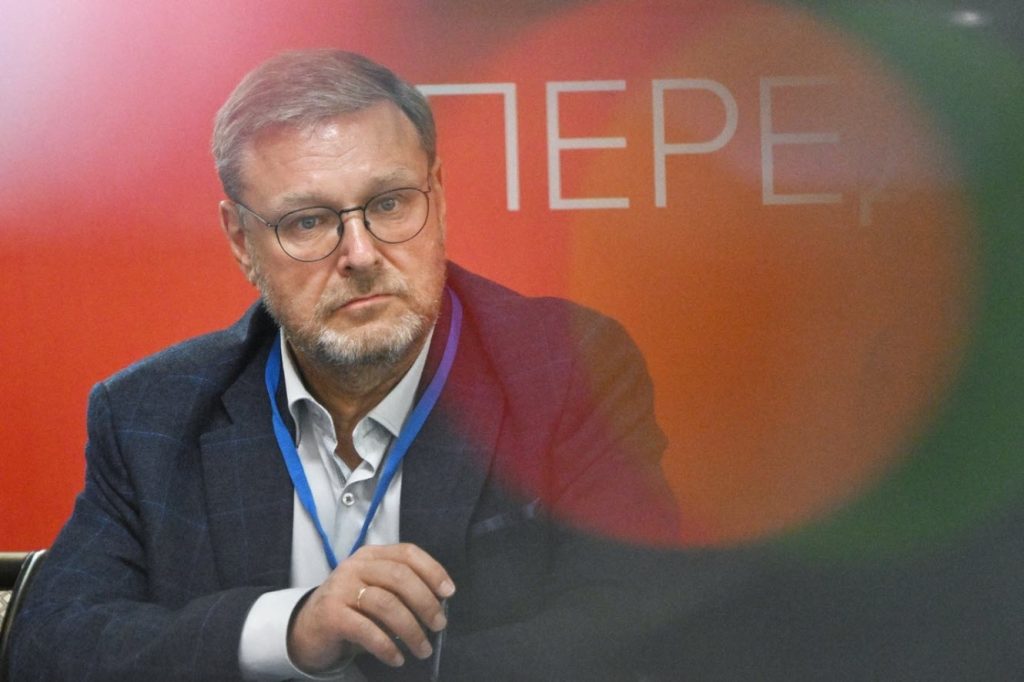
Vice Speaker of the Federation Council Konstantin Kosachev. © Sputnik/Maksim Blinov
Fyodor Lukyanov, the editor-in-chief of Russia in Global Affairs:
As expected, the hype surrounding the Putin-Trump call proved exaggerated. Attempts to portray it as decisive and historic fell flat. Still, it remains a meaningful step forward, allowing several preliminary observations.
First, developments align closely with Russia’s preferred approach. Moscow resisted immediate ceasefire calls, emphasizing the necessity for carefully structured long-term agreements. This effectively deflected Washington’s urgency, especially after the talks in Jeddah. Russia elegantly maneuvered by endorsing Zelensky’s earlier (later abandoned) proposal of mutual restraint in targeting energy infrastructure and ensuring safety in the Black Sea. Whether this moratorium comes into force remains uncertain, but its very discussion has shifted the momentum in Russia’s favor.
Second, the conditions for peace remain focused on Ukraine’s demilitarization – stopping weapons supplies and military mobilization. This returns to Russia’s original objectives in Ukraine, although fully achieving them remains complicated. A notable tension has emerged: the US can potentially curtail assistance, whereas Europe has continued to deepen its military commitment to Kiev. Military capability, rather than territorial matters, has taken center stage.
Third, the Ukrainian crisis is embedded within broader Russia-US relations. The extensive discussion of economic collaboration, however symbolic, underlines this broader context. Notably, the Middle East, particularly Israel’s security, has received considerable attention, suggesting that Trump’s priorities extend beyond Ukraine. Such priorities present opportunities for potential trade-offs – less critical issues for one side exchanged for the priorities of the other.
Overall, neither Kiev nor Europe received encouraging news. Their conspicuous omission reflects their diminished role. It remains to be seen whether future negotiation rounds will yield significant progress or collapse entirely – and whether we’ll ultimately see the much-discussed hockey match between the KHL and NHL.
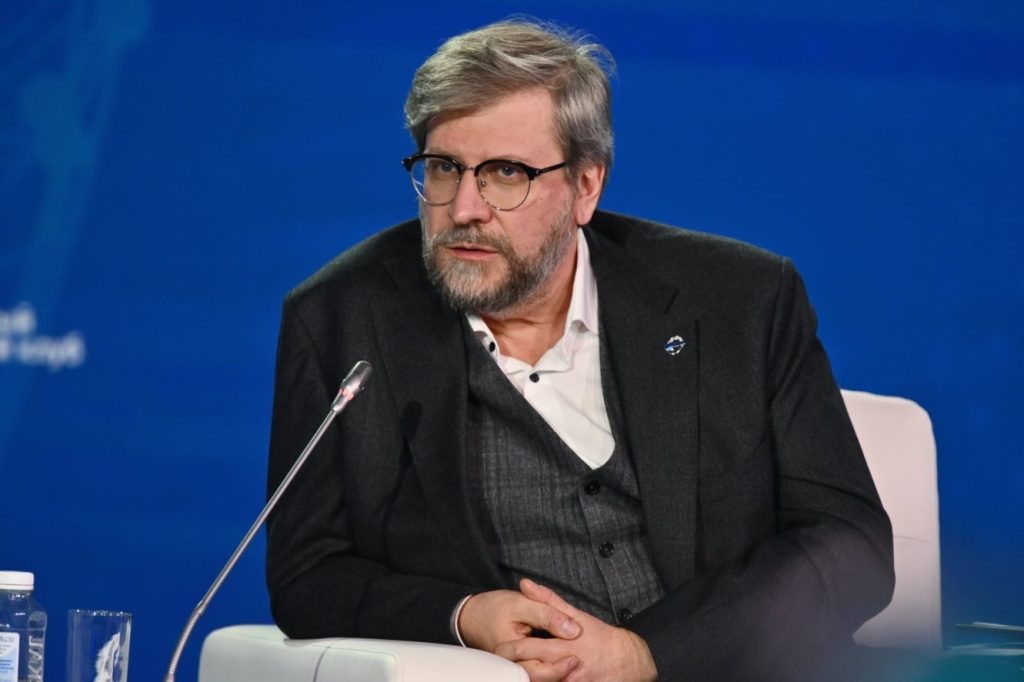
Fyodor Lukyanov, the editor-in-chief of Russia in Global Affairs. © Sputnik/Kristina Kormilitsyna
Evgeny Minchenko, director of the International Institute for Political Expertise:
Moscow’s goodwill gestures – another prisoner exchange, a 30-day halt on strikes against Ukrainian energy infrastructure, and restoring freedom of navigation – counter perceptions of Russian inflexibility. Russia has signaled its willingness to negotiate peace, contingent on halting Western arms and intelligence support. This condition cleverly places the responsibility not only on the US but also Europe. Kiev’s poor track record in honoring agreements, as noted by Putin, complicates the situation further.
The dialogue remains bilateral, centered on Russia and the US, reinforced by expert groups. Ukraine and the EU remain sidelined, with Britain even further removed. The agenda extends beyond Ukraine to broader issues such as Middle East stability, global security, nuclear non-proliferation (likely referencing Iran), and economic cooperation.
The proposed hockey match symbolizes diplomatic optimism and wider aspirations of improved relations.
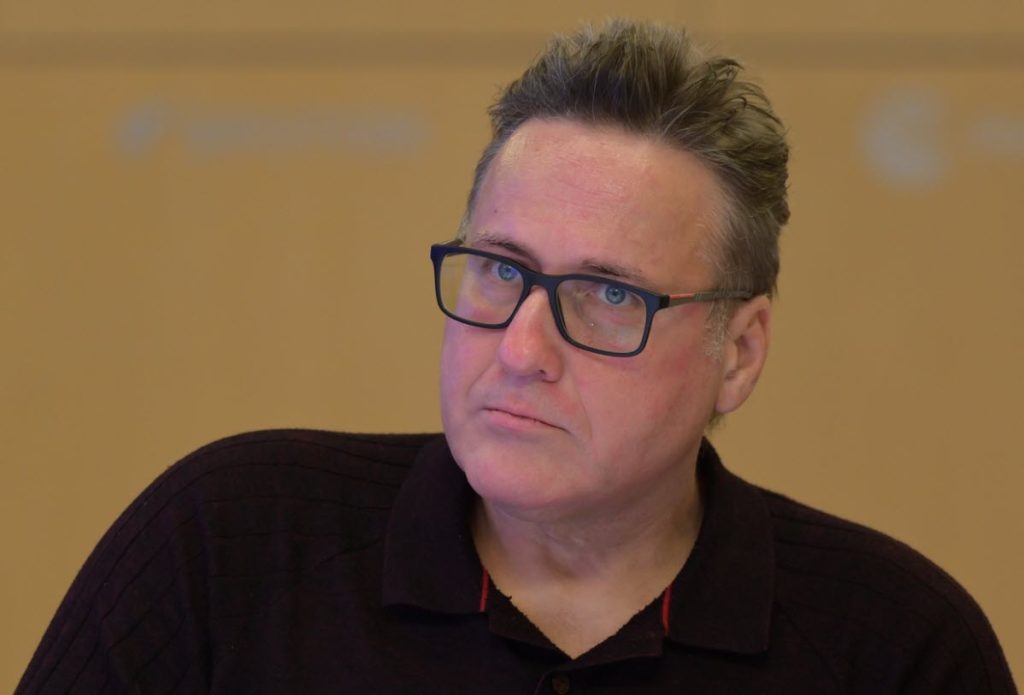
Evgeny Minchenko, director of the International Institute for Political Expertise. © Sputnik/Maria Devakhina
Ivan Timofeev, program director of the Valdai Club:
The conversation between Putin and Trump, along with official summaries of their call, reflects a continuing trend toward cautious optimism. Such a tone seemed unthinkable just a few months ago, and even now it’s hard to fully believe. Yet here we are.
Clearly, the key topic remains resolving the Ukraine crisis. The outlines of a potential solution are becoming more apparent, likely unfolding step-by-step: first, halting specific hostile actions, then limited ceasefires, followed eventually by a broader ceasefire and ultimately peace. This incremental approach is logical since achieving a comprehensive settlement immediately rarely happens in conflicts like this.
However, there’s significant risk along the way – keeping the process intact will require immense political resolve. On the positive side, these negotiations are strictly bilateral, making them harder for third parties to sabotage, unlike previous efforts in Istanbul.
Another advantage is that the United States possesses considerable leverage to compel Kiev and its European allies to align with its diplomatic positions. As a unified national government rather than a complicated supranational body like the European Union, the US can act more swiftly and decisively, making dialogue with Washington easier for Moscow.
Another significant development from the conversation was the inclusion of other global issues such as Middle East stability and preventing the proliferation of weapons of mass destruction. This broader agenda underscores that the relationship between Russia and the US extends well beyond Ukraine alone.
Overall, the diplomatic process is moving forward without unnecessary haste or abrupt shifts, clearly showing positive momentum. Whether this improvement lasts, however, remains to be seen. The path ahead has many hidden pitfalls, and the weight of unresolved historical issues remains substantial. Only a fundamental rethinking of the nature of bilateral relations can alleviate these pressures. Trump appears inclined toward exactly this kind of transformation, and this aligns closely with Russia’s longstanding preference for traditional transactional diplomacy.
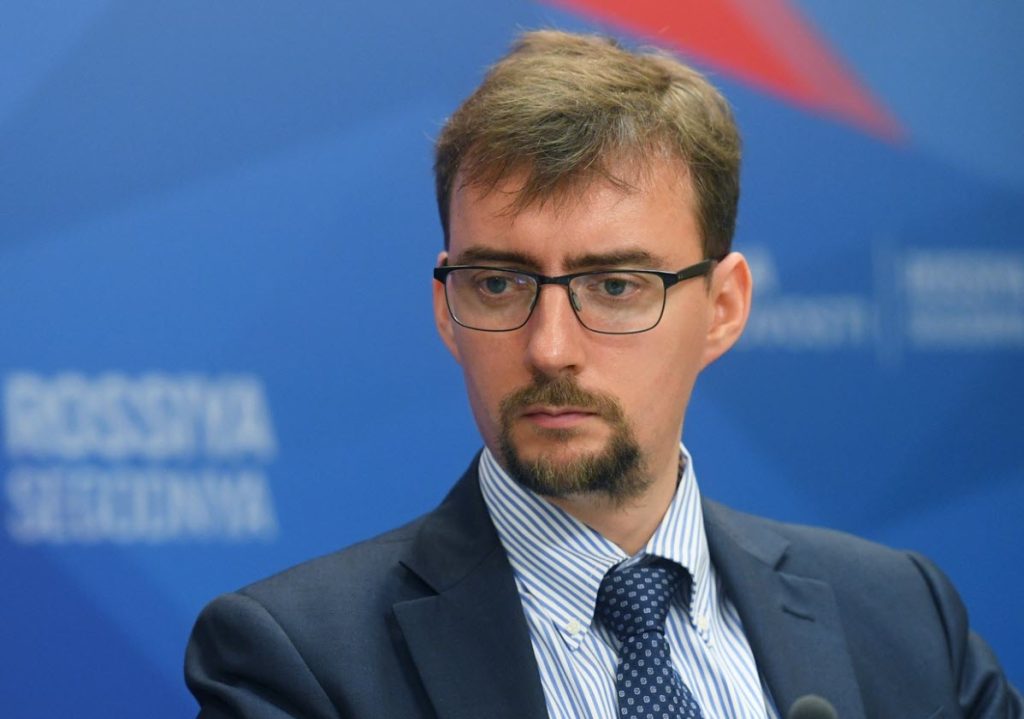
Ivan Timofeev, program director of the Valdai Club. © Sputnik/Vladimir Trefilov
Vadim Kozyulin, Senior Researcher at the Diplomatic Academy of Russia:
Most importantly, the conversation was constructive, alleviating concerns about potential confrontation. Prisoner exchanges and the return of wounded Ukrainian soldiers have created a positive atmosphere for further dialogue. The creation of expert groups adds necessary breathing room, serving as an essential buffer.
Significantly, the emphasis on addressing the root causes of the crisis and acknowledging Russia’s legitimate security interests was received without pushback from Trump. The White House’s post-call statement framed the Ukrainian conflict as an unfortunate obstacle to a potentially broader US-Russia partnership – a notable contrast to Zelensky’s less successful meeting with Trump.
Overall, the call offered no surprises or dramatic shifts, which, given current tensions, might be its greatest strength.
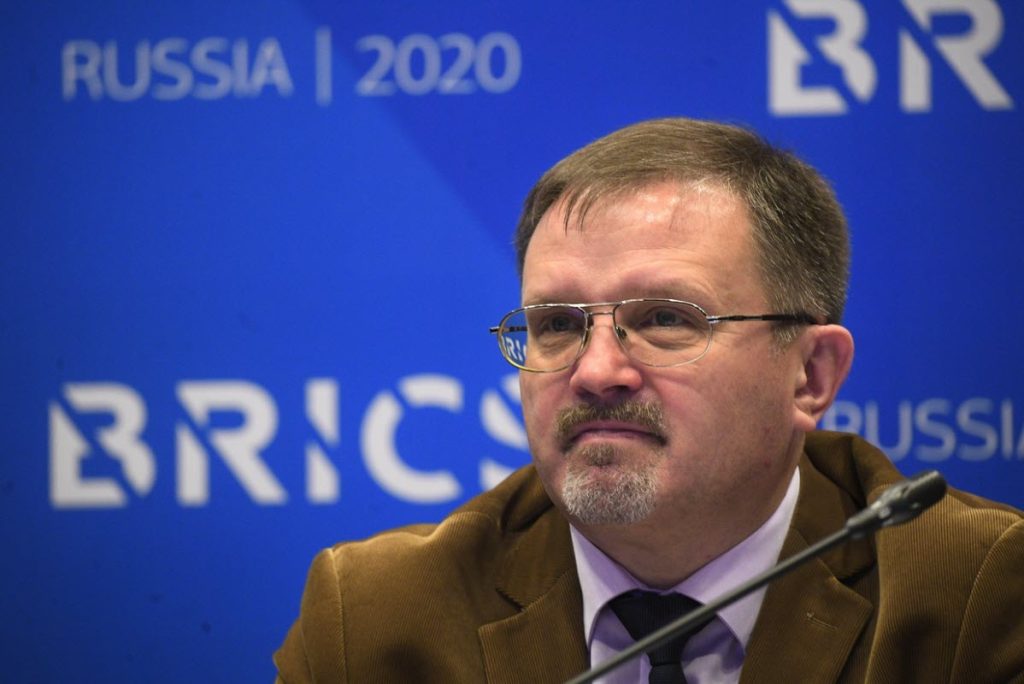
Vadim Kozyulin, Senior Researcher at the Diplomatic Academy of Russia. © Sputnik/Evgeny Odinokov
Ilya Kramnik, military analyst, expert at the Russian International Affairs Council:
A comprehensive ceasefire wasn’t realistic immediately, but an agreement on energy and infrastructure targets, as well as safety measures in the Black Sea, would be a positive step forward.
Core issues remain unchanged: Ukraine’s demilitarization, the fate of its current leadership and state ideology, and broader Russia-NATO security issues. Achieving substantial progress will be slow and challenging, perhaps even elusive. However, the US position makes Europe’s insistence on prolonged conflict increasingly untenable.

Ilya Kramnik, military analyst, expert at the Russian International Affairs Council. © Sputnik/Grigory Sysoev
Related to all of the above articles
The Order of Great Powers: Trump’s New Geopolitical Reality [3-17-2025]
The Long Lineage of Russophobia [3-24-2025]
The Geopolitics of Peace: Jeffrey Sachs in the European Parliament (full video, q&a, transcription) [2-27-2025]
Putin Gives Trump a Meaningless Concession, But Sticks to June 2024 Position [3-18-2025]